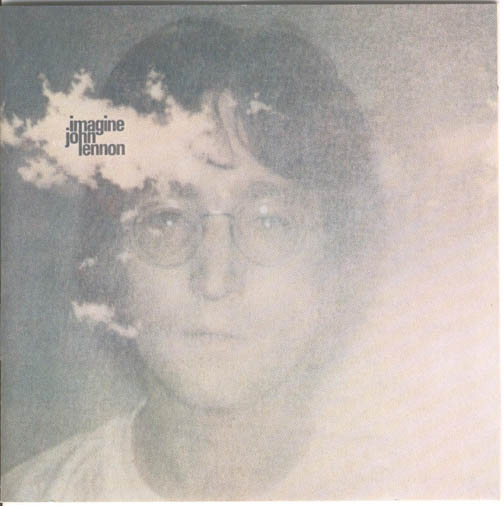
Imagine (1971)

1. Imagine
2. Crippled Inside
3. Jealous Guy
4. It's So Hard
5. I Don't Wanna Be a Soldier Mama,
I Don't Wanna Die
6. Gimme Some Truth
7. Oh My Love
8. How Do You Sleep?
9. How?
10.Oh Yoko!
Imagine, released in 1971, is often held up as the definitive solo statement from John Lennon—and not without justification. Where Plastic Ono Band had stripped Lennon bare, musically and emotionally, Imagine allowed him to re-robe: not in the flamboyance of his Beatles years, but in a more polished, accessible form. It is, in many ways, a continuation of that first record’s emotional candor, only this time with the volume turned slightly down and the melodies rendered a little sweeter.
The album’s title track has, of course, eclipsed everything else. Imagine is both hymn and manifesto—a utopian plea delivered with such simplicity and grace that it has, for better or worse, become a cultural artifact rather than just a song. It floats at the top of the album like a benediction, its understated piano and vocal giving no hint of the musical range that follows.
And that range is considerable. Imagine is remarkably diverse in tone and style: protest songs, delicate ballads, wry pastiches, and jagged rockers sit side by side without ever fully derailing the record’s momentum. Crippled Inside channels a kind of sardonic country twang, while Gimme Some Truth is Lennon in full sneer, spitting syllables with a fury aimed squarely at political hypocrisy and media distortion. These tracks wear their anger more lightly than those on Plastic Ono Band, and as a result, they often land with more impact.
Not everything here is confrontational. Jealous Guy is exquisite—fragile, sincere, and unflinching in its admission of emotional insecurity. Oh My Love is equally affecting, its minimalism lending it an almost hymnal beauty. And Oh Yoko! closes the album in an outburst of playful devotion, an unabashed love song as breezy as it is infectious.
But for all its grace, Imagine is not without its blemishes. How Do You Sleep?—a barbed and undeniably bitter attack on Paul McCartney—remains one of Lennon’s most caustic public gestures. That it features George Harrison on lead guitar only heightens the discomfort. The track is musically effective, but emotionally corrosive, and it sits uneasily alongside the open-hearted calls for peace and empathy found elsewhere on the record. The accompanying sleeve photo—Lennon mocking McCartney’s Ram cover by cradling a pig—is a juvenile touch that undermines the emotional maturity evident in the surrounding material.
This contradiction, of course, is central to Lennon’s post-Beatles identity. He was a man of extremes—capable of enormous empathy and astonishing cruelty, often in the same breath. Imagine captures both sides: the dreamer and the fighter, the poet and the provocateur. It is not a perfect album, but it is a profoundly human one. Despite the occasional misstep, Imagine succeeds in presenting a more complete Lennon than Plastic Ono Band—not necessarily deeper, but broader. It may not be as emotionally raw, but it is more melodic, more versatile, and, for many listeners, more enduring.
It is, in the final tally, the album that best encapsulates the Lennon the world wanted to believe in—even if the man himself was never quite so simple.
Go back to the main page
Go To Next Review